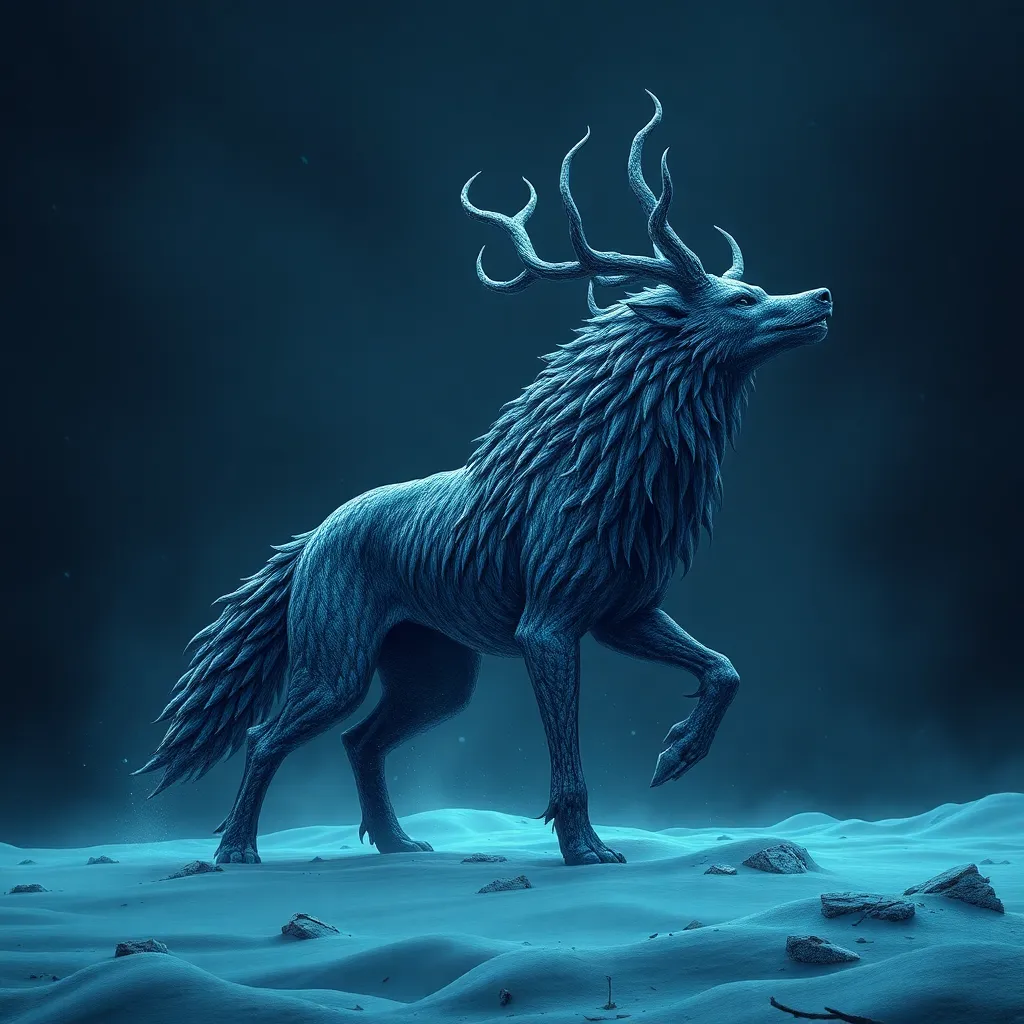The Gleipnir: A Weapon Against the Wolf in Norse Myth
I. Introduction
Norse mythology is a rich tapestry of stories, gods, and epic battles that reflect the beliefs and values of the ancient Norse people. It explores themes of fate, power, and the perpetual struggle between order and chaos. One of the most intriguing elements of this mythology is the tale of Gleipnir, a seemingly delicate yet immensely powerful binding that played a crucial role in the story of Fenrir, the monstrous wolf destined to bring calamity upon the gods.
This article aims to delve into the origins, significance, and implications of Gleipnir within Norse mythology, as well as its lasting impact on contemporary culture.
II. The Origins of Gleipnir
Gleipnir was created in a unique manner, crafted by the skilled hands of dwarves, known for their remarkable craftsmanship in Norse myths. The creation of Gleipnir was not just an act of skill but a response to a dire need, as the gods sought a way to bind Fenrir, whose threat loomed large over their existence.
The dwarves used six extraordinary materials to forge Gleipnir:
- The roots of a mountain
- The beard of a woman
- The spittle of a bird
- The sinews of a bear
- The breath of a fish
- The tail of a cat
Each of these materials holds symbolic significance, representing elements of nature, strength, and the interconnectedness of life. This combination of seemingly mundane items created a binding that was both light and strong, embodying the paradox of appearance versus reality.
III. The Prophecy of Fenrir
Fenrir, the monstrous wolf, was prophesied to play a pivotal role in the events of Ragnarök, the end of the world in Norse cosmology. According to the myths, Fenrir was born of Loki, the trickster god, and the giantess Angerboda. The gods feared Fenrir’s strength and the destruction he would bring, leading to a prophecy that foretold his rise and the subsequent fall of the Aesir gods.
This prophecy instilled a deep fear among the gods, prompting them to take action to prevent Fenrir from realizing his fate. The creation of Gleipnir was thus a vital step in their strategy to bind the wolf and avert the catastrophe foretold.
IV. The Role of the Aesir Gods
The Aesir, the principal group of deities in Norse mythology, convened to discuss the threat posed by Fenrir. Key figures in this council included Odin, the Allfather; Tyr, the god of war and justice; and Loki, whose ties to Fenrir complicated the situation. The gods knew they needed a clever and powerful binding to control Fenrir’s immense strength.
Gleipnir was deemed essential to their plan, not only for its strength but also for its deceptive appearance. Unlike traditional chains, Gleipnir was light and almost insubstantial, making it the perfect tool to ensnare the wolf without raising his suspicion.
V. The Binding of Fenrir
When the gods approached Fenrir to bind him, they proposed a challenge. Fenrir, wary of their intentions, agreed to be bound but demanded that one of the gods place their hand in his mouth as a pledge of trust. Tyr, known for his bravery and sense of justice, volunteered for this perilous task.
Once Fenrir was bound with Gleipnir, he realized he had been tricked. The delicate binding held firm against his struggles, symbolizing the gods’ triumph over chaos, at least temporarily. However, this act of binding had significant implications, marking the beginning of a series of events that would lead to Ragnarök.
VI. Symbolism of Gleipnir
Gleipnir serves as a compelling symbol within Norse mythology. Its delicate appearance contrasts sharply with the immense power it holds, representing the duality of strength and vulnerability. This duality can be interpreted in several ways:
- Strength in unity: The combination of various elements into one binding signifies the strength found in collaboration and unity.
- Illusion of power: Gleipnir’s lightness challenges the notion that strength must always appear formidable.
- Fate and control: The binding of Fenrir reflects the struggle against fate and the gods’ attempts to impose order on chaotic forces.
In modern contexts, Gleipnir can be seen as a metaphor for the challenges we face in life, where appearances can be deceiving, and true strength often lies beneath the surface.
VII. Consequences of Binding Fenrir
The immediate aftermath of Fenrir’s binding was a temporary relief for the Aesir gods, but it came at a cost. Fenrir’s binding did not eliminate the threat he posed; rather, it delayed the inevitable confrontation. In the events of Ragnarök, Fenrir would break free from Gleipnir, fulfilling the prophecy and leading to the destruction of many gods, including Odin and Tyr.
The story of Gleipnir and Fenrir ultimately highlights the inescapable nature of fate in Norse mythology. The binding, while a short-lived victory, served as a reminder that attempts to control destiny often lead to unforeseen consequences.
VIII. Conclusion
In summary, Gleipnir holds a significant place in Norse mythology as a powerful binding forged by dwarven craftsmanship, symbolizing the complex interplay of strength, fate, and the struggle against chaos. The tale of Gleipnir and Fenrir reflects deep themes of trust, betrayal, and the limits of power, resonating with audiences both ancient and modern.
As we reflect on the legacy of Gleipnir, we are reminded of the enduring nature of these myths, which continue to inspire and provoke thought about the human condition, the balance of power, and our relationship with fate.



